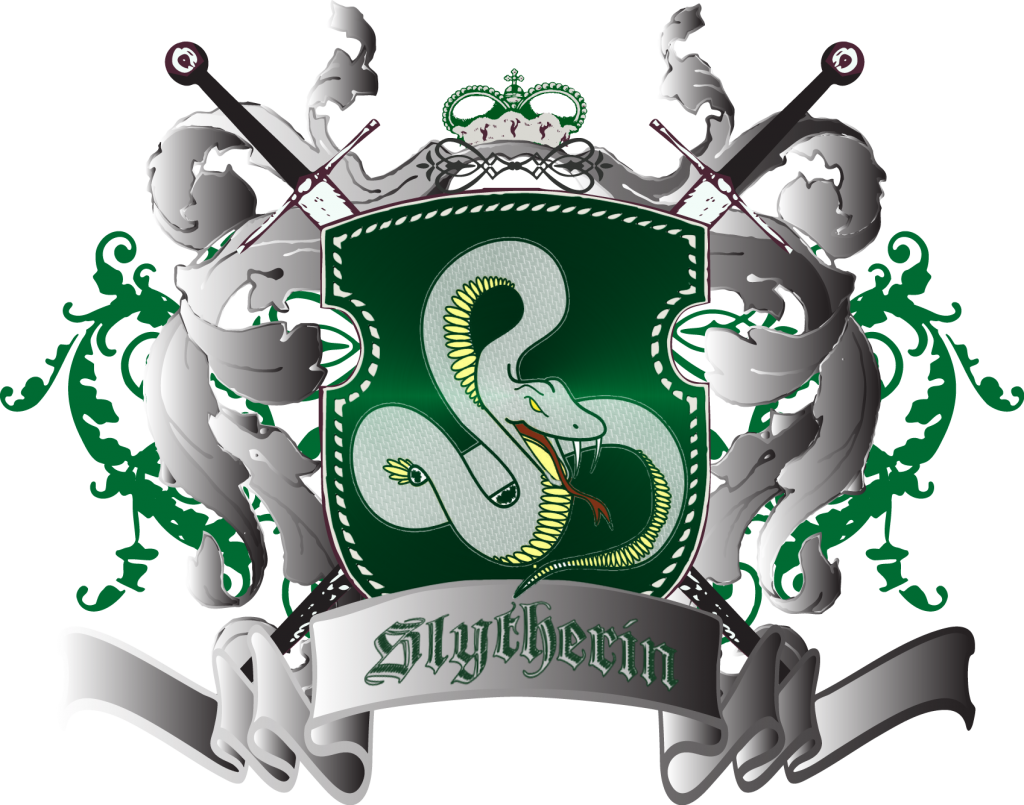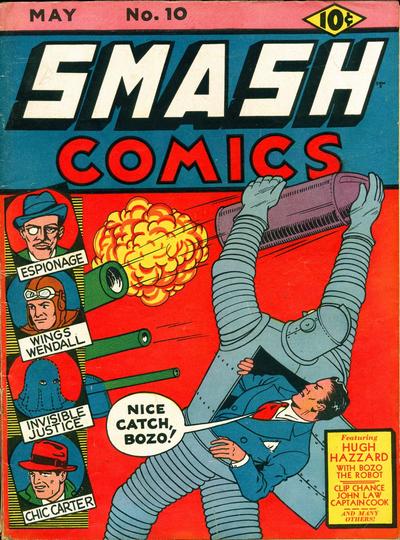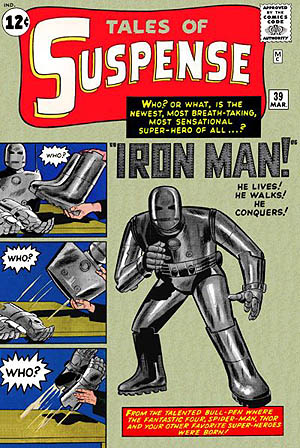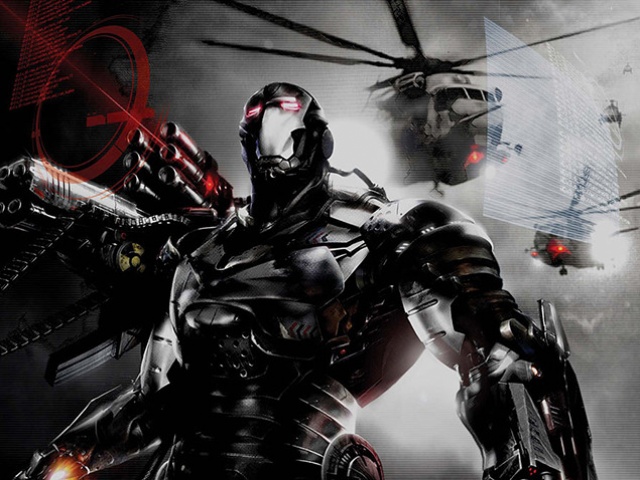“I always knew Salazar Slytherin was a twisted old loony,” says Ron Weasley, “but I never knew he started all this pure-blood stuff. I wouldn’t be in his house if you paid me.”
And yet the House of Slytherin has no shortage of new applicants. It’s a Who’s Who of Recent Movie Supervillains, including Magneto, Sebastian Shaw, the Lizard, and the Red Skull. Oh, and Lord Whatshisface minus Ralph Fiennes’ nose. Also, if you don’t mind a little song and dance with your supervillainy, the Broadway Green Goblin. My family only just caught up on the fall season of Syfy’s Alphas, so now I can add Stanton Parish to the list too. He has the best advertising slogan of the batch:
“Better people, Better world.”
The semi-immortal Parish has been honing his PR skills since the Civil War, so he may have cribbed the phrase from Kentucky eugenicists in the 1930s:
“Fewer Babies, Better Babies.”
That was back when contraception was about preventing the unfit from breeding. Or as Margaret Sanger phrased it on a 1921 cover of Birth Control Review: “To Create a race of thoroughbreds.” The American branch of Slytherin House, AKA the Eugenics Society of the United States, was sponsoring national “Fitter Family” contests, with winning families receiving medals inscribed with the slogan: “Yea, I have a goodly heritage.” The pamphlet writers over at the Carnegie Institute Department of Genetics were lesser word wizards, but no less dedicated to the cause: “Eugenics Seeks to Improve the Natural, Physical, Mental, and Temperamental Qualities of the Human Family.” Other eugenic poster writers focused on the flipside: “Some people are born to be a burden on the rest.” Ads for The Black Stork, a 1917 documentary about a pediatrician who allowed unfit babies to die, cut to the chase: “Kill Defectives, Save the Nation.” The 1921 Second International Eugenics Conference gave it a scientific-sounding spin:
“Eugenics is the self-direction of human evolution.”
That means fixing the gene pool through compulsory sterilization, immigration boycotts, anti-miscegenation laws, and what was once euphemistically termed euthanasia, AKA Auschwitz. By losing World War 2, the Nazis largely (though not completely) killed the eugenics movement. All that “pure-blood stuff” would be forever associated with the uber-Aryan Adolf Hitler, AKA Salazar Slytherin.
So why is popular entertainment still waging the war? Lord Voldermort is just the tip of the white hooded iceberg.
Ian McKellen’s Magneto complained that “nature is too slow,” back in the 2000 X-Men. Michael Fassbender’s Magneto was still complaining in the 2011 X-Men: First Class, but under the tutelage of Kevin Bacon: “We are the future of the human race. You and me, son. This world could be ours.” A month later, Hugo Weaving’s Red Skull was giving Captain America the same lesson: “You pretend to be a simple soldier, but in reality you are just afraid to admit that we have left humanity behind. Unlike you, I embrace it proudly. You could have the power of the gods!”
Last summer, Harry Potter alum Rhys Ifans, AKA Dr. Curt Connors, AKA the Lizard, wanted to “enhance humanity on an evolutionary scale” and “create a world without weakness.” “This is no longer about curing ills,” he assured Peter Parker. “This is about finding perfection.” Unfortunately, “Human beings are weak, pathetic, feeble minded creatures. Why be human at all when we can be so much more? Faster, stronger, smarter!”
Another Spider-Man supervillain sings the same song every night, plus weekend matinees. According to Bono’s Green Goblin, “The crossroads of the world just need a little tweak from a freak.”He studies “enhanced genetics” and “super-human kinetics” to create “new men,” a “new species.” The military only wants a “new breed of Marines,” but the Goblin’s “designer genes” lead him into a much bolder “do it yourself world” in which human beings are the new “masters of creation,” claiming “powers once reserved for the ancient gods.”
This is the song of the Superman. Nietzsche wrote it back in 1883. “Lo, I teach you the Superman!” shouts Nietzsche’s PR man, Zarathustra. “Ye have made your way from the worm to man, and much within you is still worm. . . .Man is something that is to be surpassed. . . . What is the ape to man? A laughing-stock, a thing of shame. And just the same shall man be to the Superman . . . .”
The Superman was Nietzsche’s answer to the death of God. Who needs Him? We can evolve ourselves. You could argue Nietzsche was writing philosophical allegory, not Aryan supremacy. But once George Bernard Shaw (any relation to Sebastian?) translated “ubermensch” into “superman,” the House of Slytherin was up and singing:
For each of the four founders had
A house in which they mightTake only those they wanted, so,
For instance, Slytherin
Took only pure-blood wizards
Of great cunning just like him.Said Slytherin, “We’ll teach just those
Whose ancestry’s purest.”
Maybe Rowling, like recent screenwriters for the X-Men, Captain America, and Spider-Man, just borrowed eugenics as a boiler plate bad guy. There’s no twisted old loony bigger than Adolf.
But then why did it take till January of this year for my state to introduce the Justice for Victims of Sterilization Act? Virginia was once the cutting edge of eugenics. The future chancellor of Germany admired our 1924 Racial Integrity Act while scribbling Mein Kampf in his prison cell. He used its DNA for the Nazi’s own Law for the Prevention of Hereditary Diseased Offspring.
Hitler removed himself from the gene pool in 1945, but Virginia eugenicists kept sterilizing the unfit till 1979. Governor Warner apologized over a decade ago, but only now is the legislature even considering paying for its Death Eater history. The bill limits claims to $50,000 per victim, with an estimated grand total of $76M.
If that sounds like a lot, then imagine living your muggle life under the reign of Voldemort.
Yes, Virginia, there are supervillains. And they don’t come from kids’ books.
Now pass the damn bill.





